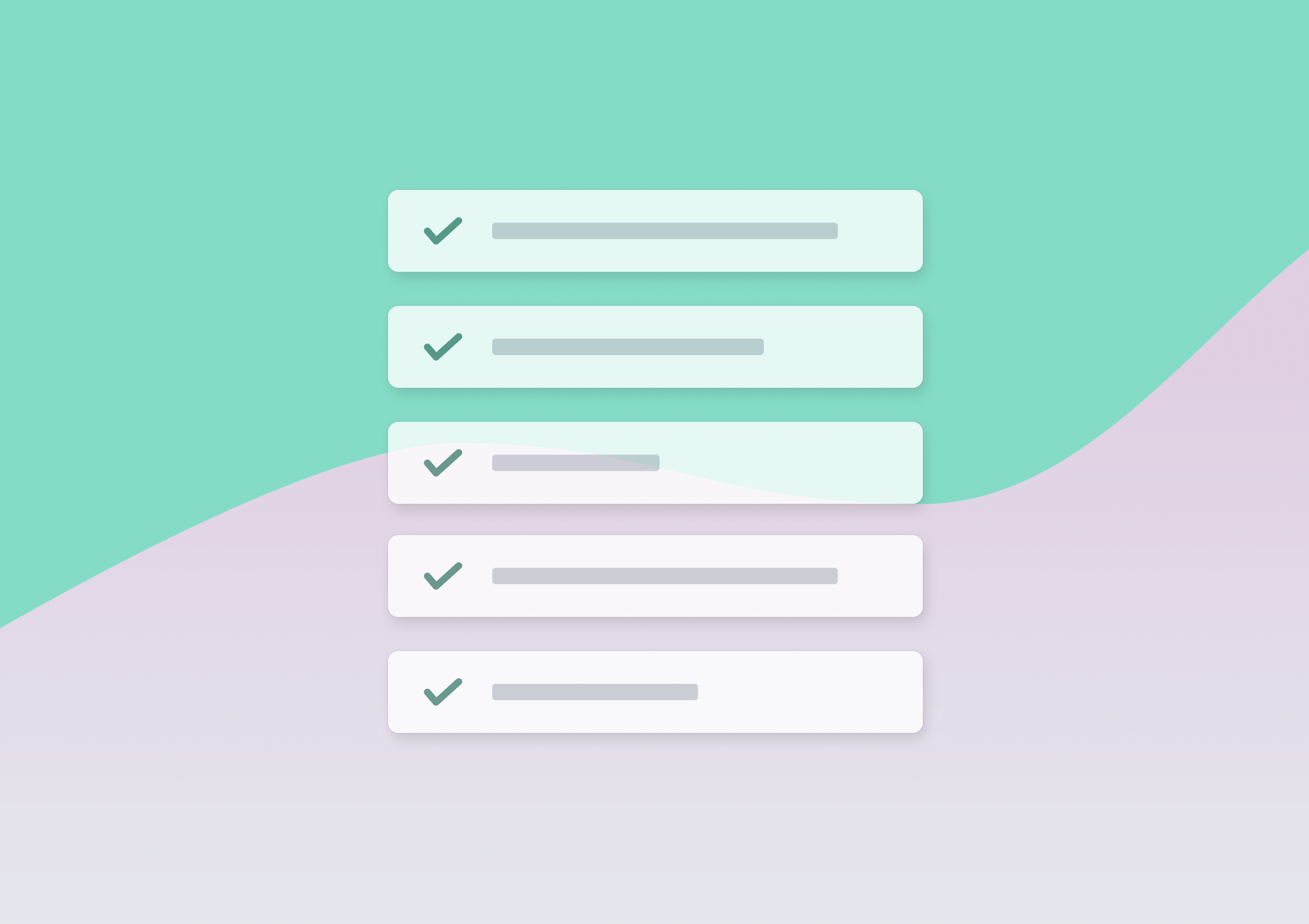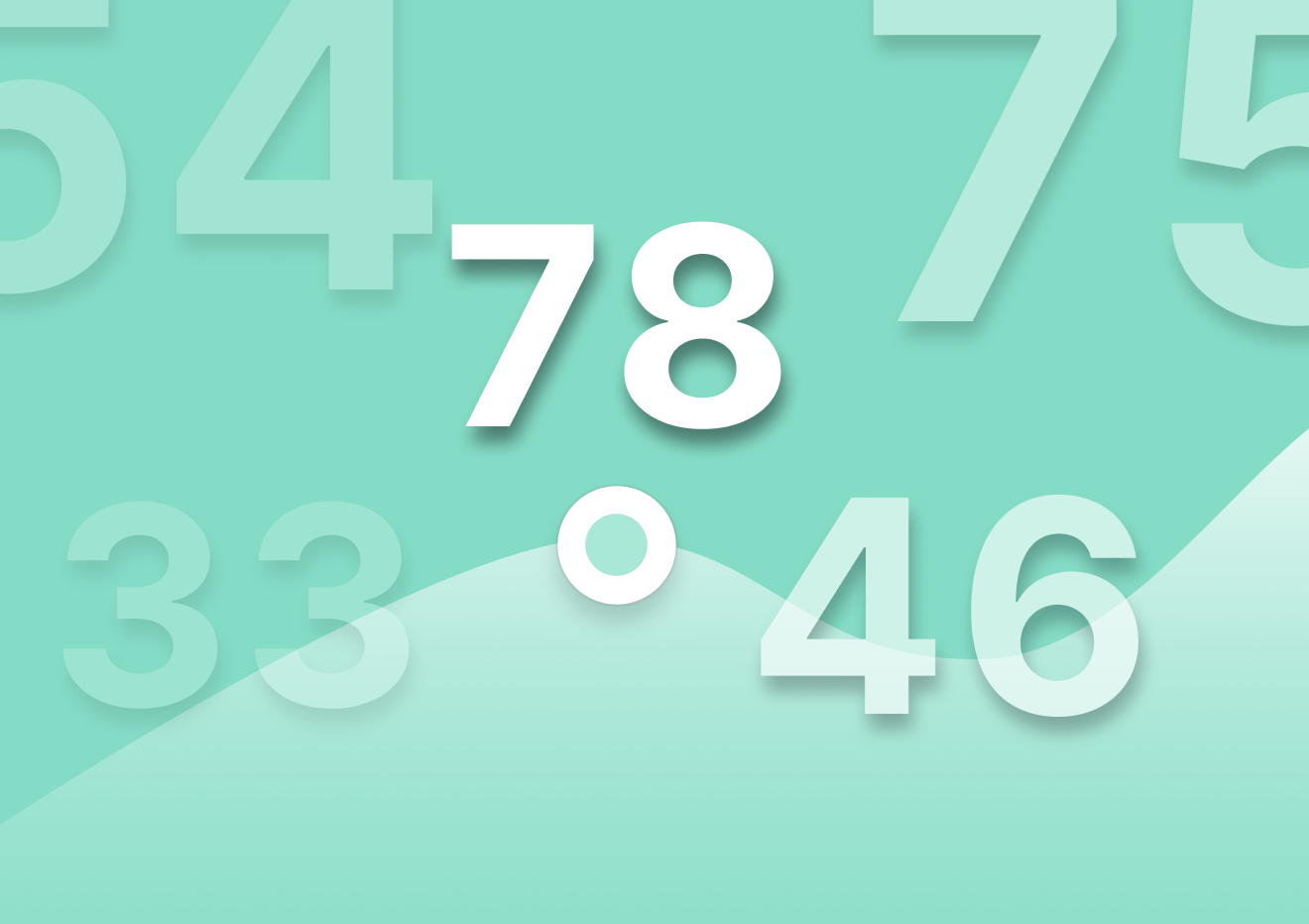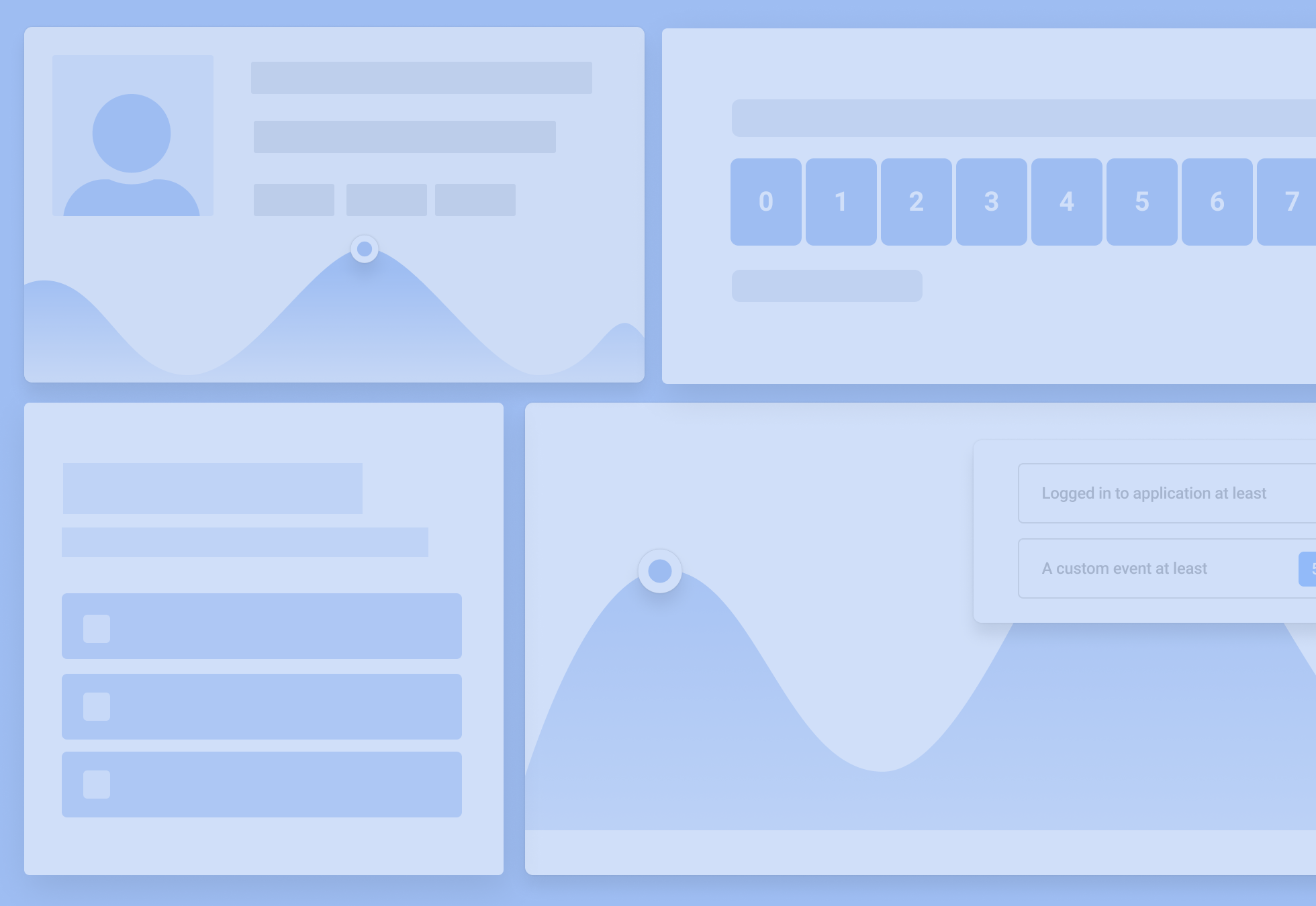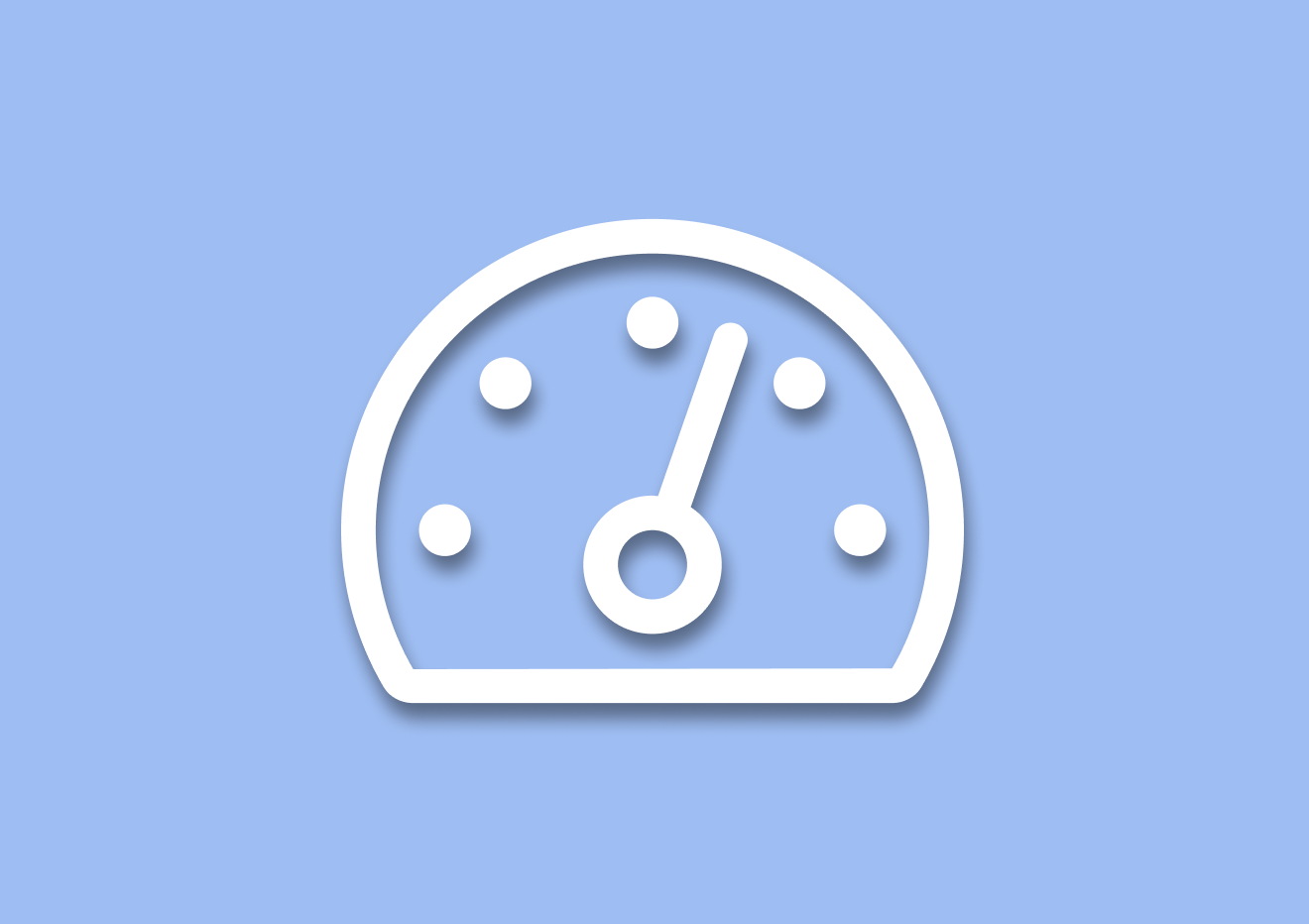In-App CSAT Surveys: Setup and Best Practices
TL;DR
- CSAT surveys measure how satisfied users are with specific experiences inside your product
- In-app CSAT gets higher response rates and more accurate feedback than email
- Trigger surveys at the right moments: post-onboarding, after support chats, or feature usage
- Keep them short, native, and personalized with follow-up questions
- Use targeting, behavioral logic, and frequency caps to get clean data without annoying users
- Refiner lets you build, style, and launch CSAT surveys in minutes. No dev work required
I’m sure you’ve heard this advice over and over again:
If you want to truly know how satisfied your users really are, you just need to ask.
And sure, it’s true. There is no better way to find out about customer satisfaction than by asking about it.
But that advice also misses what I think is the fundamental aspect of asking for user feedback – the context.
You see, asking users about satisfaction when they’re not engaging with your product is a bit pointless. All they can tell is a recollection, not a feedback on the actual experience.
It’s doing the same while they’re engaging with your app that delivers gold.
And in this guide, I’ll show you exactly how to do that with in-app CSAT surveys.
Ready?
What Is an In-App CSAT Survey?
Overall, a CSAT survey measures how satisfied a user is with a specific part of your product or experience.
CSAT survey is usually short, typically just one question, and super easy to answer. Most teams use a 1–5 or emoji scale. It’s quick to answer, and hard to ignore.
A typical CSAT survey looks more or less like this:

And you know what, the best time to ask it is in the moment—right after something meaningful happens.
- That might be a user completing a task,
- finishing onboarding,
- using a new feature, or even
- resolving a support ticket.
And why asking in the moment?
Well, the short answer is that when you ask at the right time, you’re more likely to get honest, specific feedback that reflects the user’s actual experience.
That immediacy is what makes in-app CSAT so powerful. You’re not asking users to remember how they felt two days ago. You’re asking them while the emotion is still fresh. And because the survey is built into the product experience, it feels like part of the flow—not an interruption.
The result? Higher response rates, more accurate feedback, and insights that help you improve what matters most.
That’s why in-app CSAT works so well. Instead of waiting for an email follow-up, you ask right inside the product. That means better timing, higher response rates, and clearer feedback.
💡 Definition: CSAT (Customer Satisfaction Score) tells you how satisfied users are with a specific interaction or experience. Usually measured on a 1–5 or 1–7 scale.
Why Use In-App CSAT Surveys?
Most SaaS teams I talk to already use CSAT surveys in some form, most commonly, email.
The problem? By the time the survey reaches the user’s inbox, the moment is gone. The feedback is colder. The response rate drops. And worse, it’s disconnected from the actual experience you’re trying to evaluate.
In-app CSAT fixes that. With in-app CSAT, you ask while the experience is still happening. That could be after a live chat, a completed onboarding flow, a finished setup wizard, or a task the user just accomplished.
It’s fresh. It’s contextual. It’s real.
Here’s why I always recommend in-app CSAT over email:
- Higher response rates. You’re meeting users where they are inside your product, not hoping they’ll open an email.
- Cleaner insights. Feedback is tied directly to actions or flows. You know what they’re reacting to.
- Less friction. It takes a second to click a smiley or a 1–5 rating. No login, no clutter.
- More accurate data. You get emotional truth in the moment, not a reconstructed memory.
And if you’re using a tool like Refiner (disclaimer – this is my tool;) you can get even more targeted:
- You can show it only to specific user segments (like trial users or power users)
- Trigger it based on events (e.g. completed setup, integrated a feature)
- Style it to look completely native to your product
This is the kind of micro-feedback loop that compounds over time. Every CSAT response tells you something useful. Every pattern tells you what needs work, or what’s delighting people.
And when you make decisions based on that, you’re not just optimizing a feature. You’re improving how your product feels to use.
That’s what makes in-app CSAT worth it.
How does in-app CSAT compare to email CSAT?
| Feature | In-App CSAT | Email CSAT |
|---|---|---|
| Timing | Asked immediately after key actions | Delayed follow-up, often hours or days later |
| Response Rate | Higher (often 25–30%), based on our 2025 in-app response rates report | Lower (typically 5–15%) |
| Context | Feedback tied to real-time actions | Detached from the original experience |
| Friction | Seamless, inside the product | Requires opening and reading an email |
| User Experience | Feels native and unobtrusive | Interruptive and external |
| Targeting | Triggered by specific events or segments | Often lacks behavioral targeting |
| Setup Speed | Quick to deploy with Refiner | Requires email tool integration and workflows |
When should I trigger an in-app CSAT survey?
No secret here: Timing makes or breaks a CSAT survey.
Ask too early and users don’t have enough context. Ask too late and the emotion is gone.
The sweet spot? Right after a meaningful interaction, when the experience is still fresh and the user is still thinking about what just happened.
Here are a few high-performing moments I’ve seen work repeatedly:
- After a live chat or support resolution. Ask if the experience solved their issue. This is the classic CSAT use case.
- After completing onboarding. Great for understanding how smooth or confusing the process was.
- After feature usage. Just released something new? Trigger a CSAT survey after it’s been used two or three times.
- After a transaction or export. If your app involves booking, purchasing, or data exports, that’s a natural survey moment.
It’s not just about picking a moment—it’s about picking the right moment for the right users.
🧠 Tip: Use behavioral triggers to time surveys precisely. “User finished onboarding” or “User completed support chat” are far better than guessing based on time since signup.
You can also set frequency rules. For example, only show the survey once per user every 90 days, or only after a specific action has been taken. That keeps your surveys relevant without being annoying.
The result? Clean data, high-quality responses, and feedback that actually reflects how your product feels in the moment.
It’s one of the most low-effort, high-impact moves you can make if you want to improve product experience at scale.
How do I create an in-app CSAT survey?
We’ve covered the strategy and timing so now, let’s go through what actually happens when you build an in-app CSAT survey in Refiner.
And the process is actually pretty easy. All you have to do is:
- Sign up for Refiner and connect it with your app
- Create the survey (you can do it quickly based on ready-made CSAT template)
- Style the survey widget, and
- Set up display rules.
That’s it.
Here’s a full walkthrough of the setup.
1. Create a new survey
Log into Refiner and head to the “Surveys” section. Click “+ Create Survey.” You’ll choose where the survey will appear—inside your web app or mobile app.

Select “CSAT” from the list of templates. You’ll get a clean default: a 1–5 scale and a follow-up text field asking for more detail. From there, it’s ready to customize.
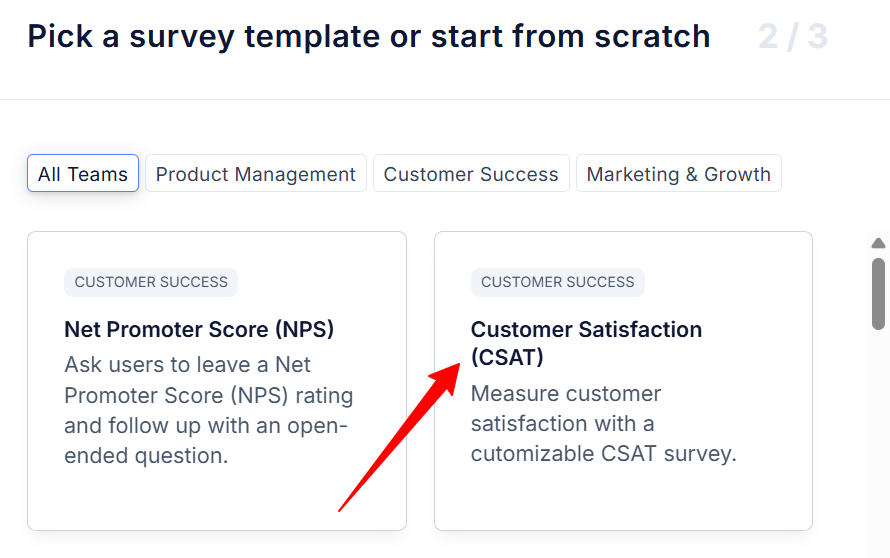
2. Style the survey widget
This part matters more than you think. A jarring, off-brand survey breaks trust. Refiner lets you adjust:
- Question wording
- Color themes and fonts
- Button styles and layout
- Widget borders, spacing, and more
Make it feel like part of your product, not a third-party pop-up.
3. Set up targeting rules
You can:
- Target specific user segments (like plan type, signup date, or product usage)
- Trigger based on in-app events (e.g. completed onboarding, used a feature)
- Combine traits and behavior to pinpoint exactly who should see the survey
Good targeting = better data.
4. Set up timing logic
You control exactly when users see the survey:
- After a certain number of logins
- Only on desktop or mobile
- Only after completing specific actions
- With frequency caps, like once per 90 days
No guesswork. Just precise, event-driven delivery.
5. Publish and collect feedback
Once it’s live, Refiner starts collecting CSAT responses instantly. You’ll see ratings and comments come in, sorted by segment, time, score, and more.
From there, you can:
- Spot trends
- Filter feedback by user type or action
- Send results to your CRM or support tool

What are the best practices for in-app CSAT surveys?
✅ Quick Summary: Want your CSAT surveys to actually help you improve the product? Here’s how: ask at the right time, keep it native, follow up with a why, don’t overdo it, and—most importantly—do something with the answers.
If you want to see how to pull this off inside your product, keep reading.
Once you’ve got the timing right, the next step is execution. It’s not just about asking the question. It’s about how you ask, who you ask, and what you do with the answers.
Here’s what I recommend based on what I’ve seen work:
1. Keep it short and native
The best CSAT surveys are invisible until you need them. Use your app’s fonts and colors. Match the tone of your product. And stick to a simple 1–5 or emoji scale.
You want the user to think, “That was easy.”
Or even better, do not even thin about it at all.
2. Trigger it off user behavior, not time
Don’t rely on guesswork. Base it on what the user actually does. Finished onboarding? Used a feature? Solved a support issue? That’s your moment.
📌 Pro tip: In Refiner, you can trigger surveys based on events and user traits without code changes.
3. Use follow-up questions for depth
After they rate the experience, ask a quick “Why?” or “What could we do better?” This open-text field is where the real gold is. You’ll find patterns, friction points, and copywriting clues.
4. Don’t show it too often
No one wants to rate your app every week. Add frequency rules—like once every 90 days or only after specific milestones. You’ll get better data and avoid annoying your users.
5. Act on the feedback
This part gets skipped way too often. Read every comment. Tag the themes. Share the insights with product, support, and marketing. Then close the loop. Let users know their feedback mattered.
💬 Example: If someone gives a 2-star CSAT after onboarding and says “too confusing,” send them a quick help doc or follow-up email. Small moves like that build trust.
CSAT isn’t about collecting a number. It’s about surfacing moments that make or break the user experience.
Do it right, and it becomes your fastest feedback loop for improving UX, onboarding, support, and everything in between.
What are the most common mistakes with in-app CSAT?
Even experienced teams trip up on the basics. I’ve seen it happen over and over—surveys go live, and feedback rolls in… but nothing useful comes from it. Why? Because of a few fixable mistakes.
1. Asking too soon
I’ve seen teams trigger CSAT in the first 2 minutes of onboarding. The user barely knows what the product does. At that point, the rating tells you nothing. Give people time to experience value before asking how they feel.
2. Asking too often
You don’t need CSAT every week. If you’re showing surveys constantly, users will start ignoring them. Or worse, get annoyed. Set guardrails: once per user every 90 days is a good default, unless there’s a major event worth capturing.
3. Ignoring the follow-up answers
This one stings. A user gives a 2-star rating and types out a full paragraph explaining why. And it just sits there. No tag, no response, no action. The score is just a number—the comment is the insight.
4. Surveying everyone
Not every user is in the right mindset to give useful feedback. If someone hasn’t logged in for weeks, or just got stuck in a bug, you probably don’t want to ask them how they feel about your onboarding.
5. Making it look like a popup ad
I’ve seen some CSAT surveys that look like they came from a third-party marketing site. Off-brand fonts, weird copy, clunky UI. If it doesn’t feel like part of your product, users won’t trust it—and they won’t engage.
The fix? Most of these are simple. Add smart triggers. Limit how often it shows. Actually read and use the feedback.
Because if your CSAT setup feels like an afterthought, your users will treat it that way too.
And that’ it…
That’s what you need to know about running in-app CSAT surveys.
All that’s left is to sign up and launch your first in-app CSAT.
In-app CSAT: FAQ
Most teams aim for a CSAT score above 80%. But context matters. A 75% score after a complex onboarding process might be more meaningful than a 90% score on a simple chat interaction. Watch trends over time more than a single number.
Ask when the experience is still fresh. Right after onboarding, a support interaction, or a key product action are all great moments. Don’t wait until they’re gone or frustrated.
Absolutely. With Refiner, you can change the scale, the language, the look and feel, and more. Refiner helps you make the survey feel native to your app, not like a bolt-on tool.
CSAT asks how satisfied someone is with a specific experience. NPS asks how likely they are to recommend your product overall. CES asks how easy it was to complete a task. Each one gives you different signals. CSAT is great for tracking specific touchpoints.
Yes. Segmenting by role, plan, or behavior helps you understand how different groups experience your product. Refiner makes this easy with built-in filters and audience targeting.
Tag patterns. Share insights with your team. Reach out to unhappy users. Highlight what’s working. Don’t let CSAT sit in a dashboard. Use it to make better decisions.

